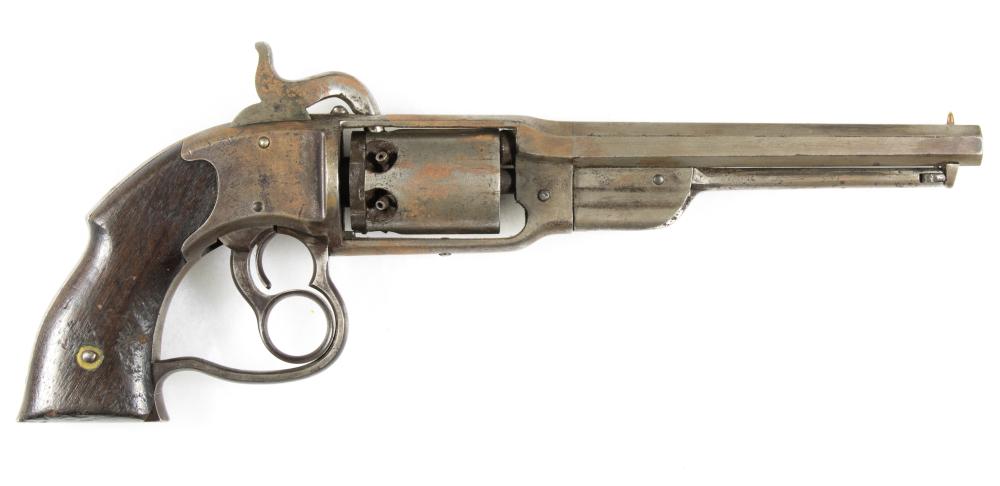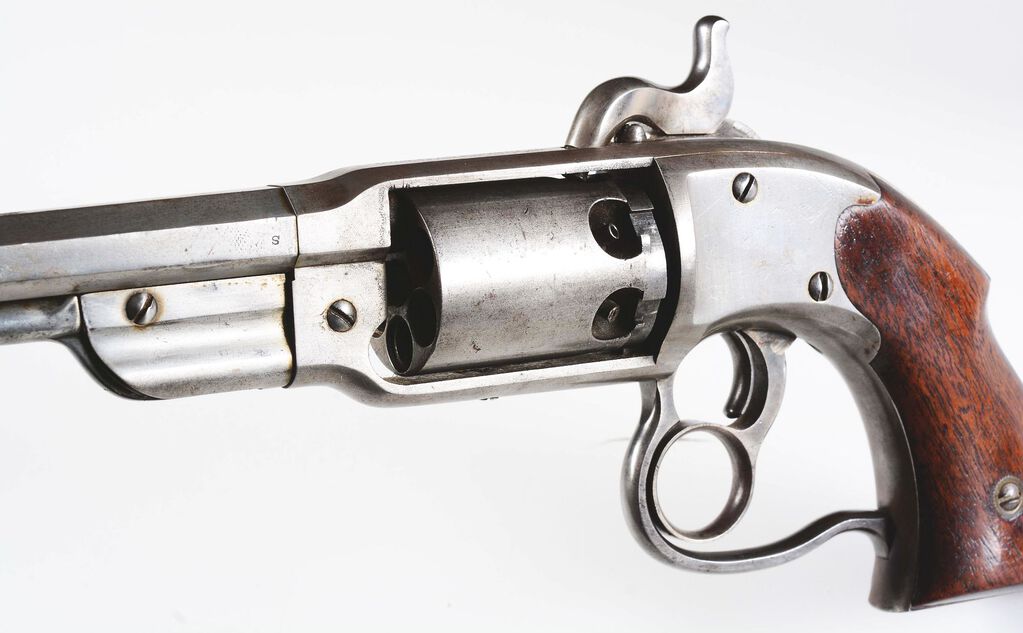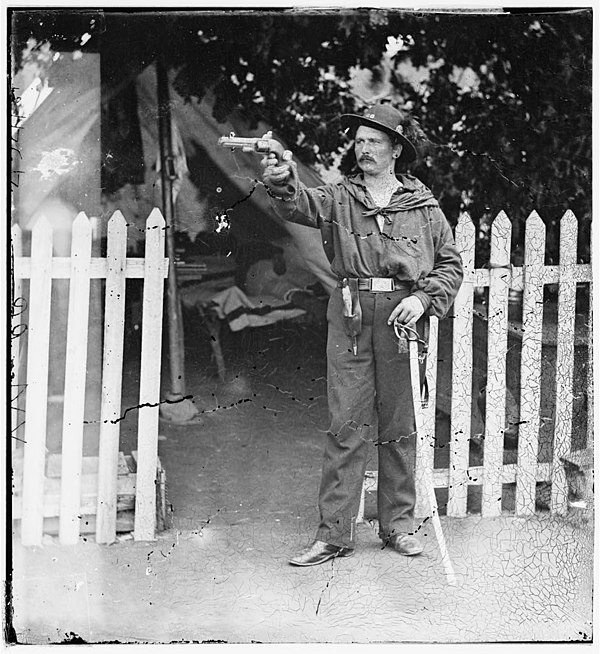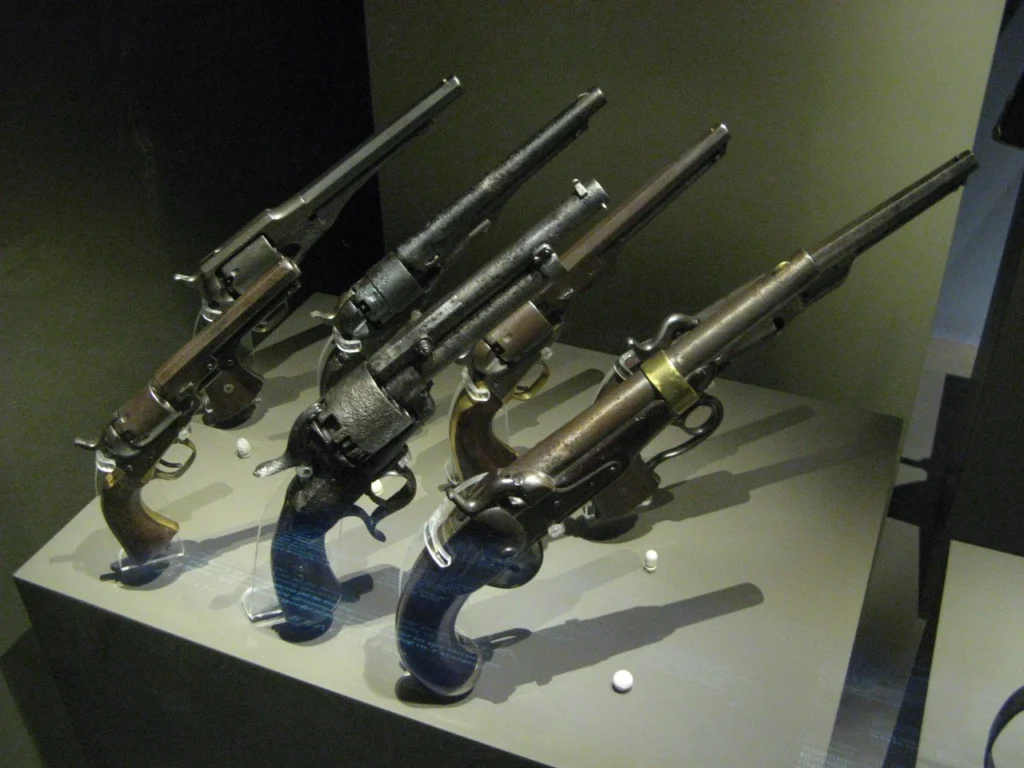Whenever the U.S. has entered war, it has initially faced a lack of guns, gear, and manpower. This has led to numerous weapons being adopted outside the standard in order to satisfy initial demand. When the United States collapsed into civil war, the need to arm up was doubled. This is why an odd revolver known as the Savage 1861 Navy revolver found its way into the holsters of both Union and Confederate forces.
The Savage 1861 Navy by the numbers
The North needed guns, and while the Colt and Remington revolvers were popular, the companies weren’t making enough. Thus, the Union ordered Savage 1861 Navy revolvers.
The revolver was called “Navy” as it was a .36 caliber which was the Navy standard. (On the Army side, they preferred the larger .44 because it could take down horses.) Although, oddly enough, the Navy ordered only 1,100 of the gun, and the Army ordered 12,000, with 11,300 delivered.
Savage produced roughly 23,000 of these guns, and the Union army got a little more than half. The other half was sold to civilians, and a number of them made their way to the Confederacy, where they found a home in the holsters of Confederate soldiers through private purchase.
The reason the Savage 1861 Navy didn’t see mass adoption was for a number of reasons. First, the Army standardized on the .44 caliber, and Savage couldn’t afford to retool and redesign the gun. Additionally, the weapons were fairly expensive compared to the Colt and Remington revolvers at the time.
These guns featured a 7.12-inch barrel and had an overall length of 14.5 inches. They weighed 3.38 pounds and held six .36 caliber balls. These were percussion guns and were fairly typical for the time in most regards. However, the operating system is what made them so unique.
The Savage 1861 Navy – Almost double-action

American revolvers of the day were single-action designs. This means the user had to manually cock the hammer before each shot, as the trigger could only complete one action. Double-action revolvers are a bit different: The trigger both cocks and fires the gun.
In 1851 an Englishman created the first double-action pistol, but manufacturers hadn’t quite smoothed out the experience during these first years. The Savage 1861 Navy was a weapon on the precipice of double-action design. If you look at the trigger guard, you see a trigger and a ring.
The user would place their middle finger in this ring. The ring would be pulled back, much like a trigger, but this would only cock the hammer. Then the trigger finger could pull the trigger and fire the weapon. This makes the weapon fairly interesting and easy to fire without moving the gun in your hand.
Related: Does the ‘SEAL Team’ show get the guns right?
It gets weirder

The ring lever might be the most remarkable feature, but the Savage 1861 Navy had some other odd features. First, the barrel sits very low in relation to the grip. This helps align the barrel with the shooter’s arm and reduce perceived recoil thus keeping the gun on target.
Second, when the ring lever is cocked, the cylinder travels rearward just slightly and then rotates. When released, the cylinder slides back forward. A small portion of the barrel then locks in a small recess in each cylinder. This forms a seal which reduces the gas and explosion lost between the frame and cylinder. In turn, this adds velocity and reduces the blast out of the sides of the revolver.
Related: Quiet Special Purpose Revolver: The tunnel rat’s lost sidearm
And weirder

Another oddity is the placement of the nipples for percussion caps. They sit on the cylinder and eventually rotate to a position where they are pointing upward. Unlike most revolvers, the Savage 1861 Navy has a hammer that comes over the top and strikes the percussion cap. Most revolvers place the percussion caps at the rear of the cylinder.
This placement offers both an advantage and a disadvantage. The advantage is that the caps could not fall off and jam up the action. The downside is that they could be knocked off easier, and this creates a failure to fire.
Unlike most popular revolvers of the time, the Savage 1861 Navy had a solid frame. Most revolvers of the era had open frames without a top strap. This made the gun more robust and more capable of taking a beating.
How did they perform
The Savage 1861 Navy revolvers seemed to have been fine weapons. The .36 caliber and high price kept them from being more popular. They also were somewhat complicated and difficult to repair if broken.
Nevertheless, the Savage is an interesting service sidearm that has almost been forgotten by modern history. It’s a neat design that showed what was to come with American revolvers.
Feature Image: The Savage 1861 Navy at the back row along with other revolvers of the Civil War era.




